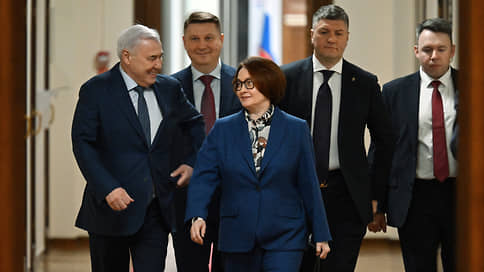the high rate remains as fiscal policy affects demand – Kommersant
[ad_1]

Chairman of the Bank of Russia Elvira Nabiullina at a meeting of the State Duma listed the advantages of a high key rate. The head of the Central Bank explained that monetary policy (MP) is not easing due to fiscal policy. According to the head of the Central Bank, a strict monetary policy “does not contradict the development of the economy, the interests of the real sector, as is sometimes presented.”
“Why do we continue to keep the rate at 16%, despite the fact that inflation is more than two times lower than it was at its peak? <...> Structural restructuring of the economy is accompanied by increased spending. And fiscal policy makes a higher contribution to aggregate demand than before: through government orders, through public investment, wage growth, preferential loans, direct subsidies. To prevent this from leading to an ever-accelerating rise in prices, the space for private credit is shrinking. And this means that monetary policy should be tighter,” said Ms. Nabiullina (the speech was broadcast on the State Duma website).
The Chairman of the Bank of Russia noted that “with a high rate we protect the real incomes of citizens.” “This is a direct contribution of monetary policy to the fight against poverty. Inflation hits the pockets of poor people the hardest, partly because prices for essential goods accelerate first. There were enough such examples last year,” she said. Ms. Nabiullina also believes that most enterprises understand that the increase in costs from high inflation is higher than from a temporary increase in interest costs.
Tight monetary policy led to an increase in deposits. According to Elvira Nabiullina, a turning point occurred in August, and an active influx of money into deposits began. Over the five months until the end of the year, citizens’ deposits increased by 5.3 trillion rubles. Ms. Nabiullina noted that “this is a record pace.” In the second half of 2023, Russians earned almost 1 trillion rubles on deposits. The influx of funds into deposits continues; in the first quarter of 2024 it amounted to about 2 trillion rubles.
Among other positive effects of a high rate, the head of the Central Bank mentioned a more stable ruble exchange rate and the return of loans to a more balanced growth rate.
In March, at a meeting of the board of directors, the Central Bank left the key rate at 16% per annum. The decision was made against the backdrop of easing, but still high, inflationary pressure.
Details – in the material “Kommersant” “Key bet without hesitation”.
[ad_2]
Source link






